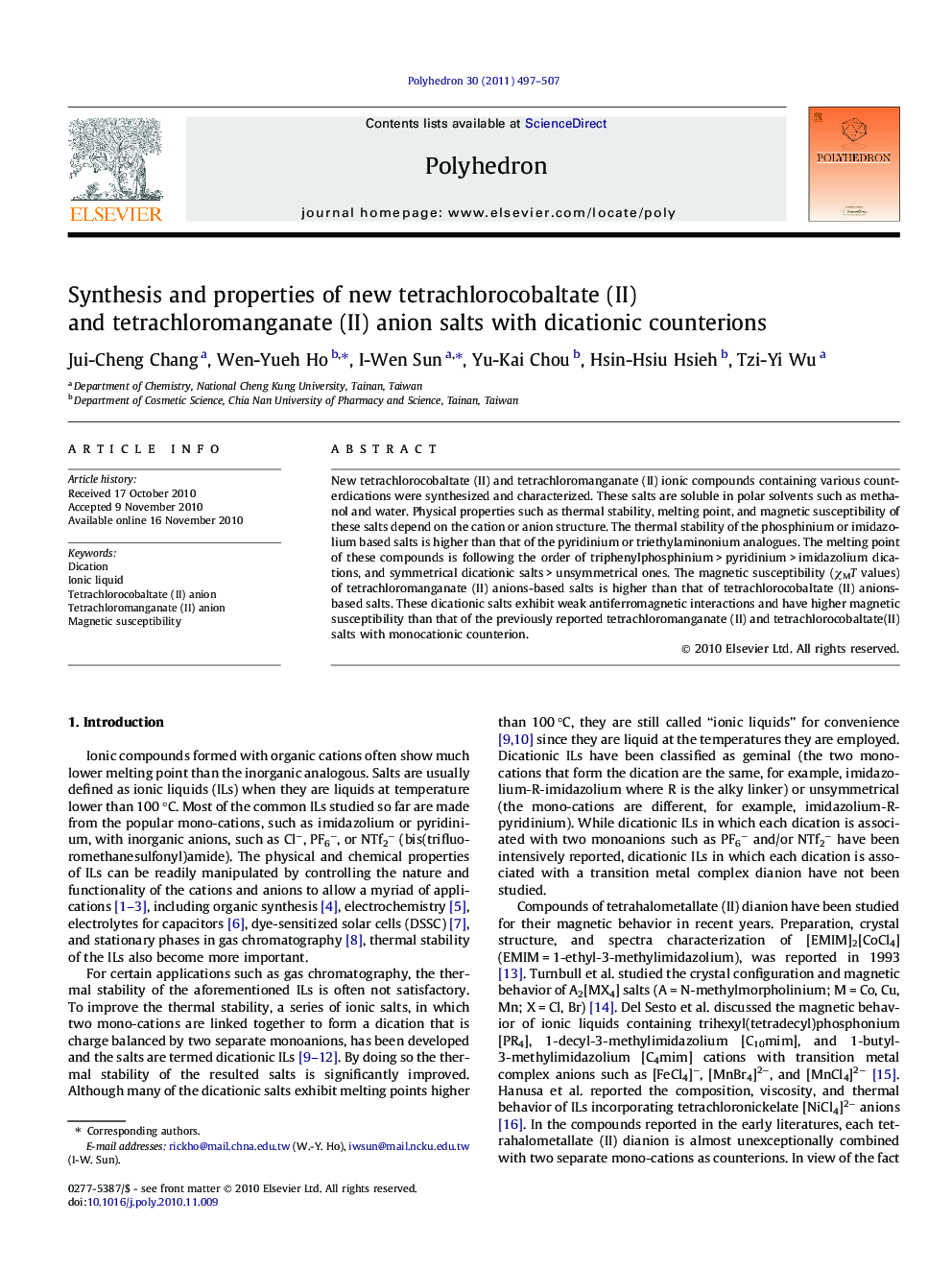| کد مقاله | کد نشریه | سال انتشار | مقاله انگلیسی | نسخه تمام متن |
|---|---|---|---|---|
| 1336359 | 979583 | 2011 | 11 صفحه PDF | دانلود رایگان |

New tetrachlorocobaltate (II) and tetrachloromanganate (II) ionic compounds containing various counterdications were synthesized and characterized. These salts are soluble in polar solvents such as methanol and water. Physical properties such as thermal stability, melting point, and magnetic susceptibility of these salts depend on the cation or anion structure. The thermal stability of the phosphinium or imidazolium based salts is higher than that of the pyridinium or triethylaminonium analogues. The melting point of these compounds is following the order of triphenylphosphinium > pyridinium > imidazolium dications, and symmetrical dicationic salts > unsymmetrical ones. The magnetic susceptibility (χMT values) of tetrachloromanganate (II) anions-based salts is higher than that of tetrachlorocobaltate (II) anions-based salts. These dicationic salts exhibit weak antiferromagnetic interactions and have higher magnetic susceptibility than that of the previously reported tetrachloromanganate (II) and tetrachlorocobaltate(II) salts with monocationic counterion.
New tetrachlorocobaltate (II) and tetrachloromanganate (II) ionic compounds containing various counterdications were synthesized and characterized. These salts are soluble in polar solvents such as methanol and water. Physical properties such as thermal stability, melting point, and magnetic susceptibility of these salts depend on the cation or anion structure. The thermal stability of the phosphinium or imidazolium based salts is higher than that of the pyridinium or triethylaminonium analogues. The melting point of these compounds is following the order of triphenylphosphinium > pyridinium > imidazolium dications, and symmetrical dicationic salts > unsymmetrical ones. The magnetic susceptibility (χMT values) of tetrachloromanganate (II) anions-based salts is higher than that of tetrachlorocobaltate (II) anions-based salts. These dicationic salts exhibit weak antiferromagnetic interactions and have higher magnetic susceptibility than that of the previously reported tetrachloromanganate (II) and tetrachlorocobaltate(II) salts with monocationic counterion.Figure optionsDownload as PowerPoint slideResearch highlights
► The thermal stability of the phosphinium or imidazolium based salts is higher than that of the pyridinium or triethylaminonium analogues.
► The melting point of these compounds is following the order of triphenylphosphinium > pyridinium > imidazolium dications, and symmetrical dicationic salts > unsymmetrical ones.
► These dicationic salts exhibit weak antiferromagnetic interactions and have higher magnetic susceptibility than that of the previously reported tetrachloromanganate (II) and tetrachlorocobaltate (II) salts with monocationic counterion.
Journal: Polyhedron - Volume 30, Issue 3, 21 February 2011, Pages 497–507